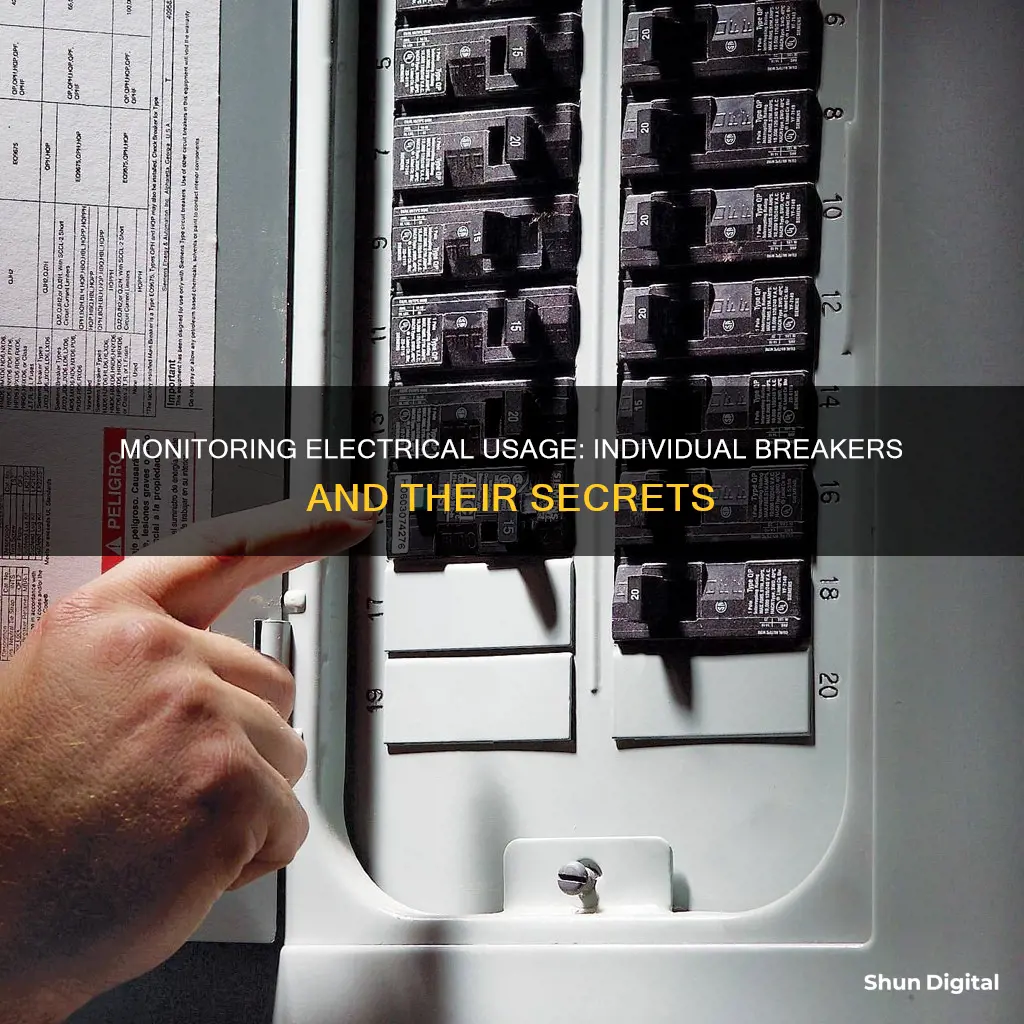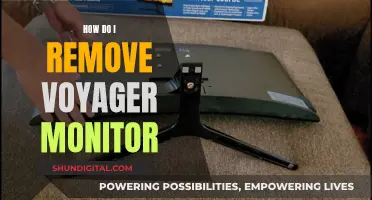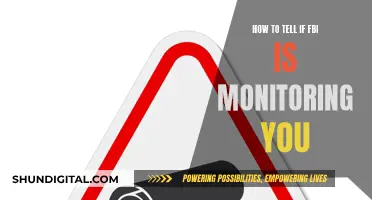
Monitoring your electrical usage can help you save money and reduce your carbon footprint. While there are old-school methods of monitoring, such as using a clamp-on amp meter, new innovations allow for monitoring whole electrical panels or individual circuits through technology integrated directly into the panels or breakers. For example, a smart panel (or load center) used in conjunction with Wi-Fi-enabled breakers can transmit data about each individual circuit to a smartphone app, allowing you to receive detailed information about which devices are on and how much electricity they are using. This data can help you identify areas where you can be more energy-efficient and save money on your electricity bill.
| Characteristics | Values |
|---|---|
| Technology | Smart electrical panels, Wi-Fi-enabled breakers, clamp-on meters, plug power meters, aftermarket electricity monitoring, utility-usage monitoring, smart meters |
| Data | Usage data, real-time data, historical data, individual circuit data, appliance data, trends, alerts |
| Benefits | Lower bills, informed choices, efficient homes, accurate picture of electricity usage, reduced carbon footprint |
| Devices | Smartphones, smart panels, Wi-Fi-enabled breakers, clamp-on meters, plug power meters, smart plugs, smart thermostats, smart lighting |
| Companies | Sense, Generac, Emporia, Leviton, Square D, Eaton, IoTaWatt, Shelly, Lantern Power Monitor, Brultech, Tesla, Lumin |
What You'll Learn

Smart panels and Wi-Fi-enabled breakers
A smart panel, also known as a "load center", works in conjunction with Wi-Fi-enabled breakers to transmit data about each individual circuit to a smartphone app. This allows users to receive detailed information about which devices are turned on and how much electricity they are consuming. With this data, homeowners can make informed decisions to optimise their energy use and reduce their environmental footprint.
One example of a smart panel is the SPAN Panel, which offers 32 controllable circuits and is compatible with leading battery systems. It provides real-time energy data, allowing users to control and monitor every circuit in their home through a smartphone or tablet app. SPAN also offers an EV charger, the Drive module, which enables users to direct solar-generated power to the EV charger instead of back to the grid, maximising their solar investment.
Another prominent smart panel is the Eaton smart breaker, which combines protective features with intelligent energy management capabilities. It offers revenue-grade metering, safe integration of renewables, and remote control access through its Smart Energy Manager app. Eaton's smart breakers are designed to enable smarter energy decisions and more flexible energy systems for homes, buildings, and the grid.
In addition to smart panels and breakers, there are also aftermarket solutions, such as the Emporia Vue and Sense energy monitors, which can be installed inside existing electrical panels. These systems use clamp-on sensors or machine learning to monitor individual circuits and provide valuable energy usage data to homeowners.
By leveraging smart panels, Wi-Fi-enabled breakers, and aftermarket solutions, homeowners can effectively monitor their electrical usage, make informed decisions, and reduce their energy costs, contributing to a more sustainable future.
Monitoring Power Usage: Strategies for Energy-Efficient Businesses
You may want to see also

Using a clamp-on meter
A clamp-on meter is a device that measures the electrical draw of a specific branch circuit in amps, which can be converted to watts to determine the impact on your electrical bill. It is a more traditional method of monitoring electricity usage, but it is still effective and can provide valuable information about your energy consumption.
To use a clamp-on meter, you will need to follow these steps:
- Identify the branch circuit you want to monitor. This could be a specific appliance, such as a hot tub or pool heater, or a particular area of your home.
- Ensure you are taking the appropriate safety precautions. Working with electricity can be dangerous, so it is important to be cautious. Consider turning off the power before beginning and using appropriate protective gear, such as insulated gloves.
- Locate the correct wire within your electrical panel. The wire will be connected to the circuit breaker that controls the branch circuit you want to monitor.
- Clamp the meter around the wire. The clamp should fit snugly around the wire, ensuring good contact.
- Read the measurement. The clamp-on meter will display the electrical draw in amperage.
- Convert the amperage to wattage to understand your energy consumption. You can do this by multiplying the amperage by the voltage.
- Record the data. Unlike newer smart meters, clamp-on meters typically do not have the ability to record ongoing usage. You will need to manually record the data at regular intervals to track your energy usage over time.
By following these steps and using a clamp-on meter, you can gain valuable insights into your energy usage. This information can help you make informed decisions about your energy consumption and identify areas where you can improve efficiency or reduce costs.
How Closely Does Comporium Monitor User Activity and Bandwidth?
You may want to see also

Plug power meters
There are a variety of plug power meters available on the market, with features such as:
- Remote control and scheduling through a smartphone app
- Backlit screens for easy reading
- Overload protection
- Calculation of the cost of the electricity used
- Solar energy/net metering
- Voice control through smart assistants like Alexa and Google Assistant
Some popular options for plug power meters include:
- BN-Link – BNC-60 smart plugs
- Fayleeko stand-alone plug-in monitor
- Kill-a-Watt - P4460
- Wemo - Insight Switch
Monitoring Data Usage: Arris Router Guide
You may want to see also

Aftermarket electricity monitoring
The Emporia Vue allows you to add clamp-on sensors to monitor individual circuits. It works by installing a clamp-on current sensor around a wire, with the option to monitor only the main service conductors or to add up to 16 smaller clamp-on current sensors to monitor individual branch circuits. All of the sensors are plugged into a central hub that communicates via Wi-Fi with the Emporia Vue app. Here, you can view and record data in real time. One drawback of this system is that the more sensors you add, the more cluttered the inside of the panel becomes.
The Sense energy monitor, on the other hand, uses machine learning to "learn" about electrical usage and provide specific data about a home's energy usage. It also uses a central hub with one set of clamp-on current sensors installed on the main conductors. The system can differentiate between electrical equipment and track their energy use separately. The Sense app allows users to see real-time energy usage, trends over time, and what's turned on in their home. However, there may be some errors in recognising which equipment is operating at a given time.
Other aftermarket solutions include Curb and Emporia energy monitors, which attach to the inside of the main breaker panel and use current transformer sensors to detect energy flow. These solutions provide more accurate monitoring of each circuit but result in a more complex installation process.
Standalone home energy monitors like the Eco-Eye are also available and can provide a detailed history of electricity usage on a computer or memory card. These monitors are wireless displays that show how much electricity is being used at a glance, either as electrical units or money.
Monitoring App Data Usage: A Comprehensive Guide
You may want to see also

Smart meters
One example of a smart meter is the Sense Home Energy Monitor, which provides valuable information about a home's energy usage. It identifies individual devices and offers insights into their efficiency, allowing users to make smarter choices to optimise energy usage. The Sense app, compatible with iOS and Android, helps track overall energy consumption and specific appliance usage, sending notifications about potential issues. It also enables users to compare their energy usage with similar homes and previous months, empowering them to set energy-saving goals.
Another option is the EMPORIA ENERGY Gen 2 Vue Smart Home Energy Monitor, which comes with 16 sensors that can be attached to the main and individual circuits in the breaker box. While it is recommended to have a professional install these sensors, DIY instructions are also provided. The EMPORIA app provides notifications based on energy usage data, helping users take steps to conserve energy and control costs.
For those seeking a more affordable option, the TOPGREENER Smart Outlet with Energy Monitoring is a single outlet Wi-Fi monitor that can be controlled via a phone app. It can handle heavy-duty energy loads and can be integrated with virtual assistants like Alexa for voice control.
Monitoring Linux Memory Usage: A Comprehensive Guide
You may want to see also
Frequently asked questions
Home energy monitors or Electricity Usage Monitors (EUMs) can be installed inside a home's electrical panel to help you see how much electricity you're using in real-time. This information can then be used to make energy-use decisions and lower your electric bill.
EUMs can help you evaluate your gadgets and appliances according to how efficiently they use electricity daily, weekly, monthly, or yearly. They can also help you identify which appliances are consuming the most power.
It's important to know what to do with the data gathered by a power meter. Setting up a smart circuit breaker in your green energy management system can enhance efficiency and help you maximize the benefits of the insights from your power meter data.
A smart circuit breaker is essentially an EUM with smart technology. It regulates the flow of electricity from your electricity distribution system to the circuits in your home and comes with an intelligent usage monitor and remote control. Smart circuit breakers are quick to respond, able to measure energy signatures from various appliances, and can handle complex loads.
Smart circuit breakers go beyond simple power usage monitoring. They give you control over your power consumption and can be integrated to build a system that provides battery backup for the entire house. They can also sync with your smartphone to track consumption on each circuit in your house.







